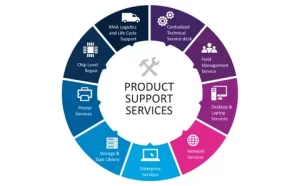How Freelancing Can Lead to a Full-Time Business
For many people, freelancing starts as a side hustle—a way to earn a little extra on the weekends or after work. But what begins as a small gig can often grow into something much bigger. In fact, for thousands of freelancers worldwide, that side hustle has quietly evolved into a thriving full-time business.
If you’re wondering whether freelancing can truly become your long-term path, the answer is yes—and this article will show you how that transformation happens, step by step.
“What starts as a small spark of income can light the fire of full-blown independence.”
From Freelancer to Business Owner: What’s the Difference?
Let’s clear something up first. Freelancing and running a business are closely related, but not exactly the same.
When you freelance, you’re selling your time and skill—usually to one client at a time. You’re a one-person team, responsible for everything from marketing and invoicing to doing the actual work.
But when you run a full-time business, things shift:
-
You stop trading hours for dollars
-
You start creating systems and processes
-
You may hire others or sell products/services at scale
The good news? You don’t need a fancy MBA to make the leap. Many business owners today started as solo freelancers—just like you might be now.
How Freelancing Builds a Strong Business Foundation
Before you go “all in,” here’s why freelancing is actually a smart training ground for future business success.
1. You Learn How to Manage Clients

Freelancing
Freelancing teaches you how to communicate, set boundaries, and build trust with clients. These are the same skills you’ll use when managing long-term customers in your business.
2. You Understand Cash Flow Early
You learn quickly how to send invoices, chase payments, budget for slow months, and reinvest earnings. That kind of financial discipline is what keeps businesses alive.
3. You Build a Reputation and Network
As a freelancer, every project adds to your credibility. Over time, you become the “go-to” expert in your niche. And with a solid portfolio, your business will already have a head start.
4. You Discover What Works (and What Doesn’t)
Freelancing lets you experiment without huge risk. You find out which services are profitable, what your clients value most, and where your strengths really lie.
The Steps to Grow From Freelancing to Full-Time Business
The transition doesn’t happen overnight. But with a little planning, freelancing can naturally evolve into a stable business.
Step 1: Define Your Core Service or Product
Ask yourself:
-
What service do I enjoy most?
-
What problem do I solve better than most people?
Focus on your strongest offer. It could be web design, SEO consulting, branding, or email marketing—whatever your best skill is.
Step 2: Package Your Offer Like a Business
Instead of billing hourly, start offering fixed packages or monthly retainers. This not only increases your income but also positions you as a professional solution—not just a “freelancer for hire.”
Step 3: Create a Basic Brand
You don’t need a fancy logo. But have a consistent name, a clean website or profile, and a clear message about who you help and how.
Step 4: Outsource or Automate Small Tasks
As income grows, you’ll hit time limits. Instead of burning out, start outsourcing small tasks like admin, invoicing, or even parts of the work. This frees you up to focus on strategy and growth.
Step 5: Expand Your Services or Products
Once you’ve mastered one core offer, consider branching out. That

Freelancing
could mean:
-
Selling digital products (like templates or courses)
-
Offering group coaching or workshops
-
Building an agency with a team
Freelancing vs. Business Ownership: A Quick Look
| Aspect | Freelancing | Full-Time Business |
|---|---|---|
| Time Investment | You do all the work | You manage systems and people |
| Income Source | Limited to personal time | Scalable through offers or a team |
| Responsibility | 1-to-1 client service | Managing multiple clients + operations |
| Risk | Low to moderate | Moderate to high (but bigger payoff) |
| Freedom | High, but time-limited | Higher, with income and time leverage |
Real-Life Example: How One Freelancer Became a Business Owner

Freelancing
Take Sara, for example. She started writing blog posts on the side while working a full-time admin job. Within six months, she had enough clients to quit. A year later, she created a small content agency, hired two junior writers, and began offering full blog management packages.
Today, Sara runs a six-figure business with part-time freedom. What started as freelancing now pays her more than her old job ever could—and she gets to choose who she works with.
Final Thoughts
Freelancing is more than just a gig economy trend. It’s a launchpad for entrepreneurship. If you’re already freelancing, you’re further along the path than you think. Every client you land, every project you complete, and every lesson you learn is preparing you to grow something bigger.
You don’t need to quit overnight. Just take steady steps, reinvest in your growth, and treat your freelance work like the business it’s becoming.
The freedom, flexibility, and income you dream of? It’s not some far-off goal. It might already be within your reach.






